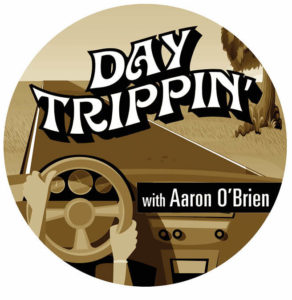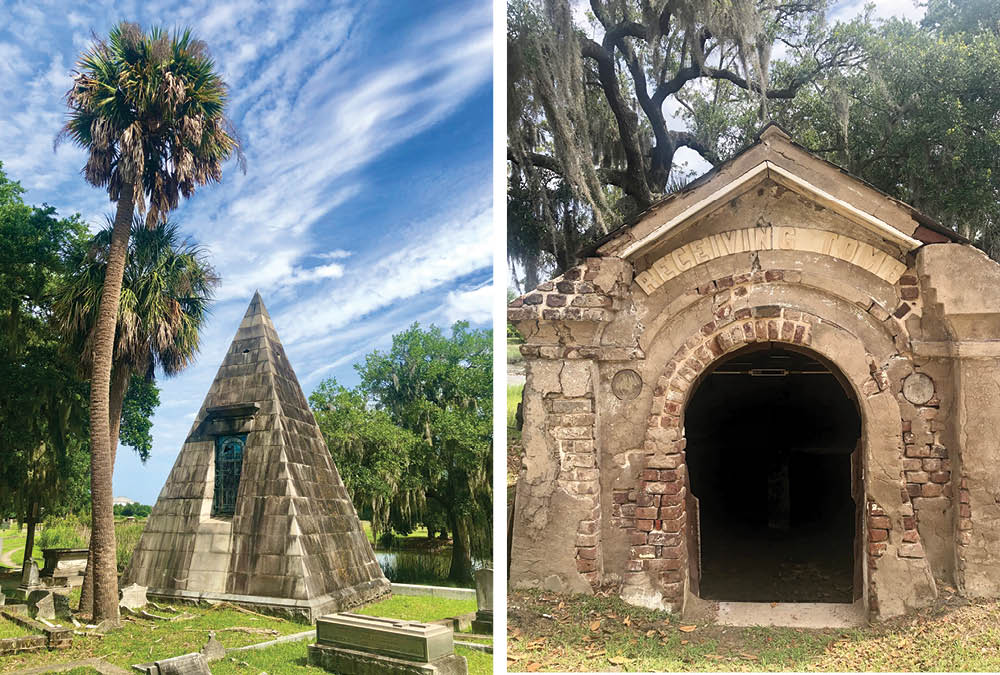This place for eternal rest is also bustling with life, from majestic oak trees to fish and shorebirds.
 A deadly virus is tearing through Charleston. People are fearful as communities grapple with quarantine and social distancing measures. Businesses, both large and small, are feeling the economic impact. Even the local government is working remotely. Misinformation on the origins of the virus is rife, and undertakers are struggling to keep up. The year is 1849.
A deadly virus is tearing through Charleston. People are fearful as communities grapple with quarantine and social distancing measures. Businesses, both large and small, are feeling the economic impact. Even the local government is working remotely. Misinformation on the origins of the virus is rife, and undertakers are struggling to keep up. The year is 1849.
Long before the horrors of COVID-19, Charleston was in the grips of yet another outbreak of yellow fever. The first outbreak killed about 15 percent of the population, with deaths so frequent that the church bells no longer rang to mark each loss. By the mid-1800s, the burden was so high that Charleston required a new public cemetery, built away from its urban center.
Today, tucked into an unassuming corner of the northern Charleston peninsula, Magnolia Cemetery is equal parts outdoor art gallery, history museum, and final resting place for some of South Carolina’s most notable figures. It has become the permanent home of governors, poets, physicians, and soldiers – all resting side by side in one of the most tranquil and scenic parts of our city.
To many people, a stroll around a cemetery may seem like a grim way to spend an afternoon, but any sense of the macabre quickly dissipates as you find yourself surrounded by ancient oak trees dripping in Spanish moss. The serene pond is alive with fish and shorebirds, and the water’s edge is abundant with wildflowers and plenty of open spaces to sit, enjoy a picnic, and soak it all in. If you have them in your closet, seersucker, bodices, and parasols wouldn’t be out of place here. Channel your inner Margaret Mitchell.
It’s easy to get figuratively and literally lost at Magnolia Cemetery. At 92 acres, the property is expansive and covers a series of small islands connected by bridges and causeways. The serpentine trails are so inviting, you can’t help but wonder what is around the next corner. Decrepit wrought iron fences outline family plots, each occupied by several generations long since passed. The stones read like a who’s who of Victorian Charleston society, names that will be familiar to anyone living here today. Maybank, Pinckney, Ravenel, Rhett, and perhaps most famously, Hunley. The entire final crew of the ill-fated submarine, including its namesake H.L. Hunley, rest here. Even today, their headstones are adorned with mementos left by visitors.
It’s fascinating to read the inscriptions on the ancient headstones. The oldest stones are the most difficult to read – over a century of erosion have left many almost indecipherable, but they are often the most intriguing. Each one offers a glimpse into who passed away and the people they left behind. Remarkably, I found a grave of someone born in 1817, who immigrated here from my small home town in England. Sadly this now means that I have to quit my job to spend every waking hour researching who this person was and if we’re ever so distantly related. I’ll be sending off DNA samples before we know it.
Perhaps the most touching tributes are those bidding farewell to children. At a time when almost half of all children born in the US didn’t make it past five years old, it’s not surprising that there are so many examples among the older gravestones. But this place isn’t just a historic relic, it’s still very much an active cemetery. Just as they did while Queen Victoria was on the throne, and the Whig party ruled from Washington, funeral services are still held today, often next to the ‘receiving tomb.’ This 19th century morgue of sorts kept bodies cool while their grave or crypt was prepared. It’s among the oldest buildings on the property and has been lovingly restored with help from the Preservation Society of Charleston.
Rather than feeling morbid, a trip to Magnolia Cemetery always leaves me buoyed with a renewed sense of vitality and uplift. It’s a reminder to love those around us while we can, and to make the most out of every moment of life – indulging in the things we enjoy the most. Fortunately for us, there is a crop of new breweries right on the doorstep of Magnolia Cemetery where we can raise a glass and toast to our good health… for now.
Where: Magnolia Cemetery, 70 Cunnington Ave, Charleston
Cost: Free
Distance from the Coburg Cow: 4.9 miles
Pairs well with: A pint of Brett de Branches from Munkle Brewing Co. and a copy of Charleston’s Historic Cemeteries by Frank Karpiel
Aaron O’Brien is a native of Great Britain. He and his wife Christina make up local duo Oh Valentino. When they’re not performing, you can find them exploring local attractions and outdoor spaces.














